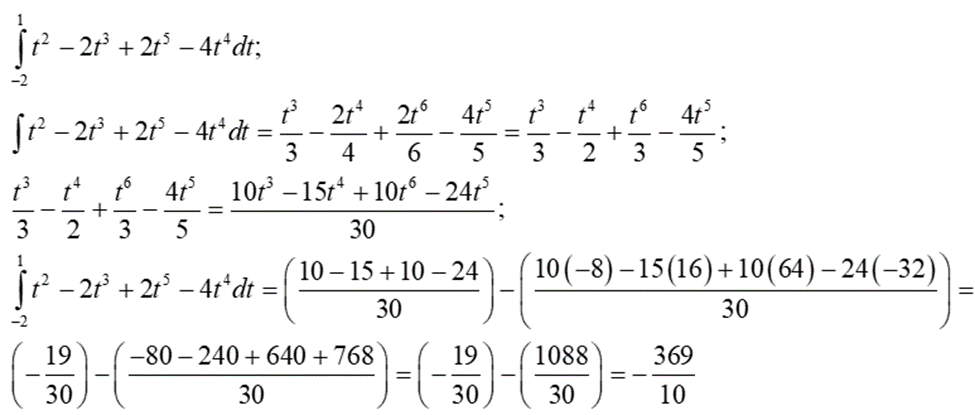Line Integral of a Vector Field: Lang (5.2.1)
Here’s a problem (5.2.1, p. 58) from Lang’s “A Second Course in Calculus”:
Compute the line integral of the vector field over the indicated curve. F(x, y) = (x2 – 2xy, y2-2xy) along the parabola y = x2 from (-2, 4) to (1,1).
To solve this problem, begin by finding a parametrization of the parabola y = x2 from (-2,4) to (1,1). We can do this by letting x = t, and then letting y = t2 for t in the interval [-2, 1]. Then, the parametrization is given by r(t) = (t, t2).
We set x equal to the parameter t as we are moving down the parabola from x = -2 to x = 1. Then, because y = x2, y = t2.
Afterwards, we will find the derivative of the parametrization with respect to t: r’(t) = (1, 2t)
Of course, the derivative of t is merely 1, and the derivative of t2 is 2t.
Now, we will substitute t for x and t2 for y in F(x, y) = (x2 – 2xy, y2-2xy).
F(x, y) = (x2 – 2xy, y2-2xy)
F(x, y) = F(r(t)) = (t2 – 2t3, t4 - 2t3)
Next, we have to take the dot product of the vector field along the curve with the derivative of the parametrization:
F(r(t)) * r’(t)
(t2 – 2t3, t4 - 2t3) * (1, 2t)
Using the definition of the dot product, we get:
(t2 – 2t3)(1) + (t4 - 2t3)(2t)
t2 – 2t3 + 2t5 – 4t4
We can now compute the integral of this dot product over the interval [-2, 1].

Therefore, the answer is -36.9.
BridgeText can help you with all of your statistical analysis and mathematics needs.





